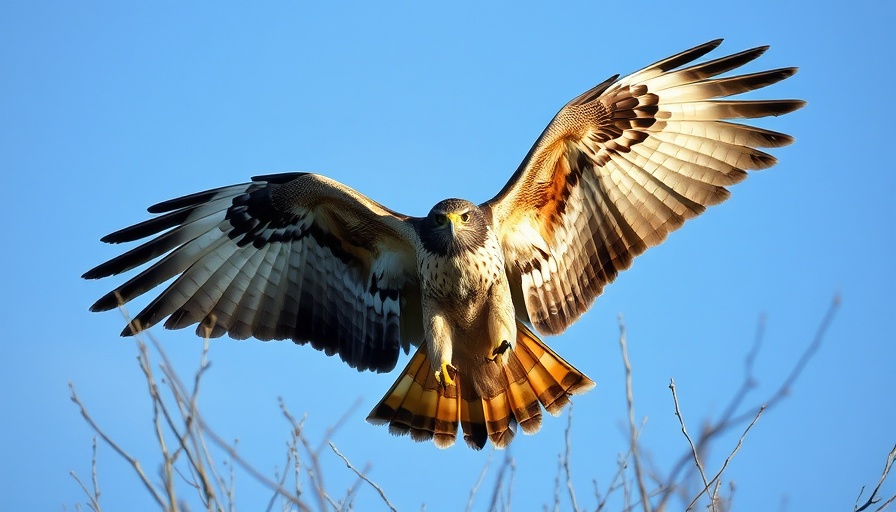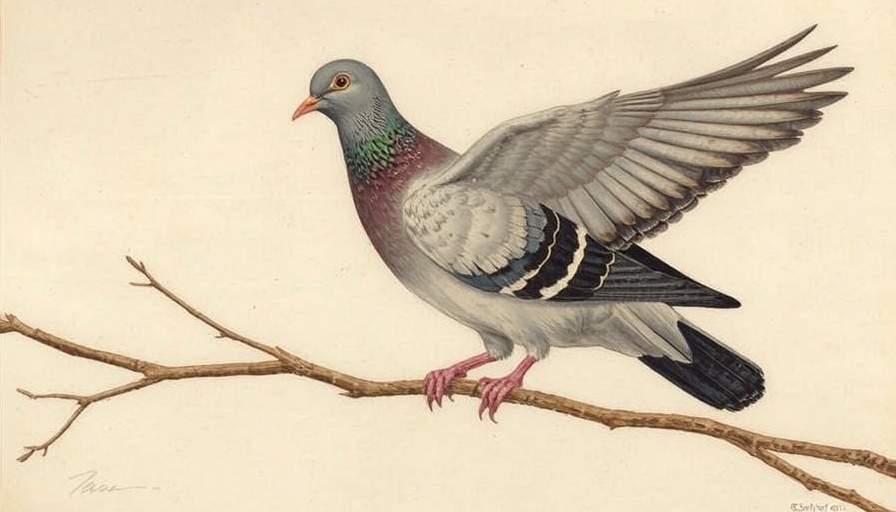
The Majestic Rough-legged Hawk: A Symbol of Resilience
The Rough-legged Hawk, scientifically known as Buteo lagopus, is a captivating raptor known for its striking appearance and remarkable adaptations to harsh winter environments. Wintering in northern regions, including parts of the Great Plains and northeastern United States, these hawks are often spotted soaring gracefully against the stark backdrop of snow-capped landscapes.
Tracking Migration Trends and Behaviors
In a collaborative research effort led by Neil Paprocki, a PhD student from the University of Idaho, the winter migration patterns of Rough-legged Hawks are under investigation. This study aims to uncover vital data about their migratory routes and feeding habits. For instance, in December 2022, researchers successfully tracked a hawk named Jeffrey, who was observed braving winter conditions in central Wisconsin and beyond, revealing the hawk's astonishing adaptability.
Diverse Diet: More Than Meets the Eye
The Rough-legged Hawk's diet primarily includes small mammals like voles and mice. However, ongoing research has unveiled a surprising aspect of their feeding habits: scavenging. Recent findings from the research project indicated that one hawk named Dorothy had a particularly diverse diet, found to include deer DNA and even traces of moose. This adaptability showcases how these raptors not only hunt but also scavenge when opportunities arise, essential for survival in the wild.
Celebrating Connections: Locals and Nature
Community engagement plays a critical role in the ongoing research. The partnership between the Badgerland Bird Alliance and Cedar Grove Ornithological Research Station exemplifies how local bird enthusiasts contribute to valuable scientific knowledge. As the reusable transmitters provide insights into these raptors’ whereabouts and activities, the community grows closer to these majestic birds, fostering a deeper appreciation for wildlife conservation.
A Bright Future for Rough-legged Hawks
With eight of the nine tracked Rough-legged Hawks still alive, this project indicates positive outcomes for their survival. As winter unfolds, birdwatchers and researchers alike eagerly anticipate the continued migration of these remarkable birds. Dorothy, now back from her travels, serves as a reminder of the resilience and tenacity that define the Rough-legged Hawk.
 Add Row
Add Row  Add
Add 




Write A Comment